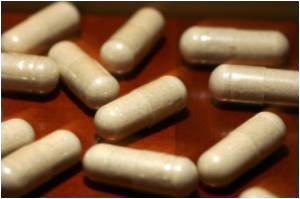Composition of beneficial microbes in the gut is altered when antibiotcs(however benign) are used repeatedly, according to researchers at the Stanford University School of Medicine.

The study examined the effects of ciprofloxacin (trade name Cipro), an antibiotic that is widely prescribed for intestinal, urinary and a variety of systemic infections.
This new study involved two courses of antibiotic administration, six months apart, and it revealed more-subtle, long-term effects of ciprofloxacin use - such as the replacement of multiple resident bacterial species by other, closely related varieties and the occasional complete eradication of a species.
The infrequent occurrence of easily visible side effects such as bloating and diarrhea from ciprofloxacin use has given rise to an assumption that the drug spares most beneficial gut-dwelling bacteria.
While the study's findings shouldn't be interpreted to mean that ciprofloxacin is dangerous and should be avoided, Relman said, they do raise questions about possible long-term effects of antibiotic administration, in addition to concerns about spurring the evolution of drug-resistant organisms.
For this study, the Stanford scientists collected more than 50 stool samples from each of three healthy adult females over a period of 10 months. Then they used advanced, molecular techniques to count the number of different microbial species represented in each sample, as well as relative population sizes of the different species in that sample.
Advertisement
Roughly one-third to one-half of the resident species' populations declined, with some disappearing entirely. A few originally less-abundant species grew in number, as they filled in the ecological niche abandoned by bugs adversely affected by the drug.
Advertisement
The second course of antibiotic administration produced a stronger effect.
The communities in the other two subjects partially recovered from the second course, but never returned to their original state. In essence, each subject's community of gut-dwelling microbes shifted to a new, "alternative" state and remained in that state for at least two months after the second antibiotic course had been completed. Thus, all three subjects experienced significant and lasting changes in the specific membership of their internal microbial communities at the end of the 10-month study period.
The study will appear onlinein Proceedings of the National Academy of Sciences.
Source-ANI










